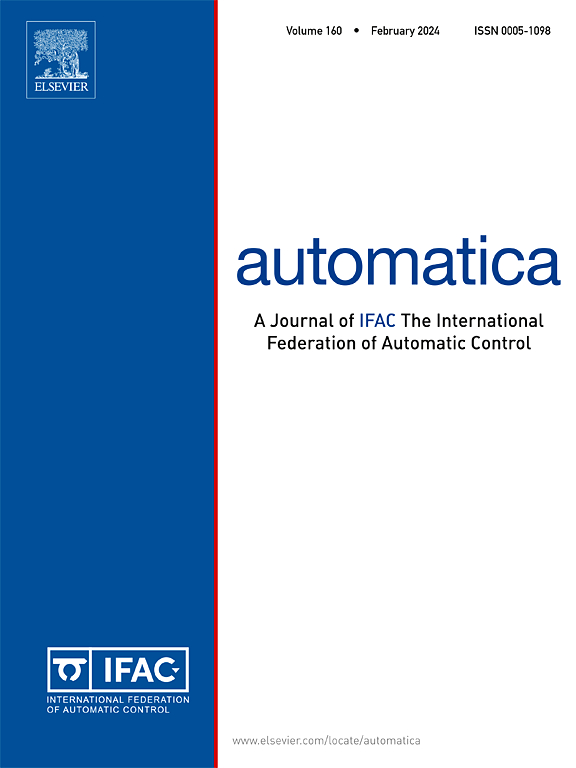线性化FitzHugh-Nagumo方程的事件触发边界控制
IF 5.9
2区 计算机科学
Q1 AUTOMATION & CONTROL SYSTEMS
引用次数: 0
摘要
本文利用事件触发边界控制策略研究了线性化FitzHugh-Nagumo系统的指数镇定问题。在保证闭环系统指数稳定性的前提下,采用回溯法推导出一种基于特定触发规则更新的反馈控制律。我们建立了系统的适定性,并分析了其输入到状态的稳定性与事件触发控制引入的偏差的关系。数值模拟证明了这种方法的有效性,表明与连续反馈策略相比,它在保持相似稳定性能的同时,以更少的控制更新来稳定系统。本文章由计算机程序翻译,如有差异,请以英文原文为准。
Event-triggered boundary control of the linearized FitzHugh–Nagumo equation
In this paper, we address the exponential stabilization of the linearized FitzHugh–Nagumo system using an event-triggered boundary control strategy. Employing the backstepping method, we derive a feedback control law that updates based on specific triggering rules while ensuring the exponential stability of the closed-loop system. We establish the well-posedness of the system and analyze its input-to-state stability in relation to the deviations introduced by the event-triggered control. Numerical simulations demonstrate the effectiveness of this approach, showing that it stabilizes the system with fewer control updates compared to continuous feedback strategies while maintaining similar stabilization performance.
求助全文
通过发布文献求助,成功后即可免费获取论文全文。
去求助
来源期刊

Automatica
工程技术-工程:电子与电气
CiteScore
10.70
自引率
7.80%
发文量
617
审稿时长
5 months
期刊介绍:
Automatica is a leading archival publication in the field of systems and control. The field encompasses today a broad set of areas and topics, and is thriving not only within itself but also in terms of its impact on other fields, such as communications, computers, biology, energy and economics. Since its inception in 1963, Automatica has kept abreast with the evolution of the field over the years, and has emerged as a leading publication driving the trends in the field.
After being founded in 1963, Automatica became a journal of the International Federation of Automatic Control (IFAC) in 1969. It features a characteristic blend of theoretical and applied papers of archival, lasting value, reporting cutting edge research results by authors across the globe. It features articles in distinct categories, including regular, brief and survey papers, technical communiqués, correspondence items, as well as reviews on published books of interest to the readership. It occasionally publishes special issues on emerging new topics or established mature topics of interest to a broad audience.
Automatica solicits original high-quality contributions in all the categories listed above, and in all areas of systems and control interpreted in a broad sense and evolving constantly. They may be submitted directly to a subject editor or to the Editor-in-Chief if not sure about the subject area. Editorial procedures in place assure careful, fair, and prompt handling of all submitted articles. Accepted papers appear in the journal in the shortest time feasible given production time constraints.
 求助内容:
求助内容: 应助结果提醒方式:
应助结果提醒方式:


